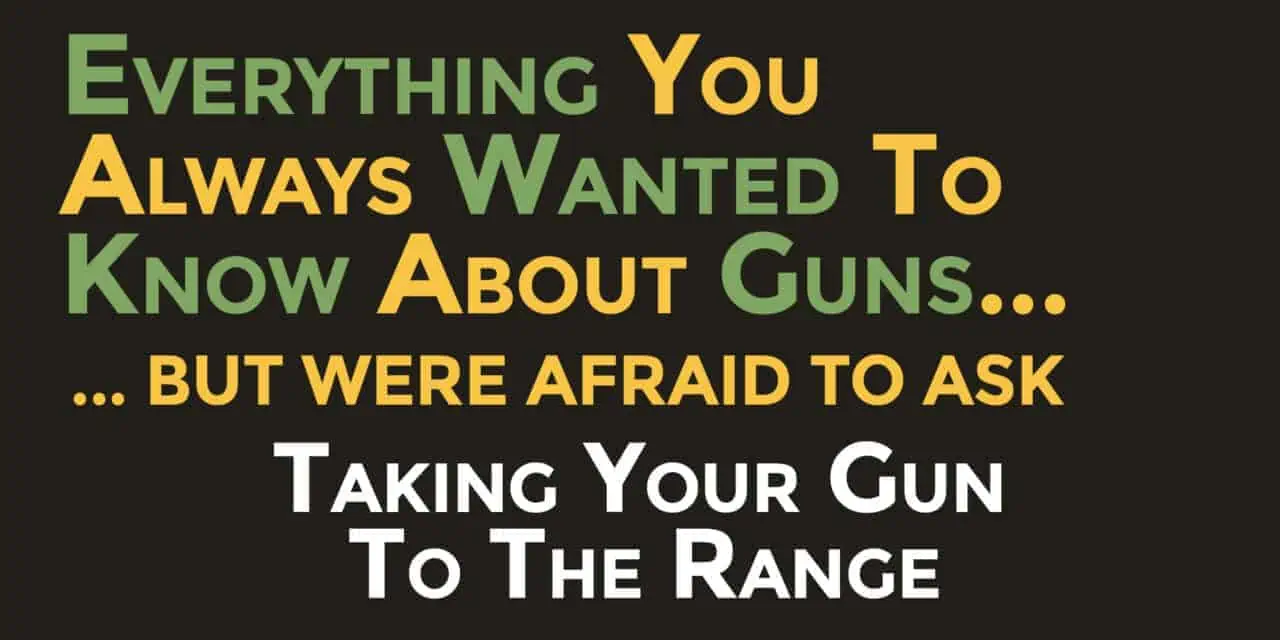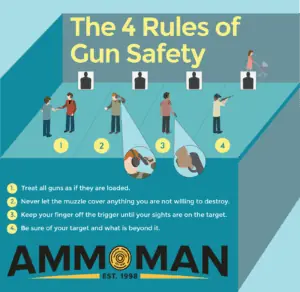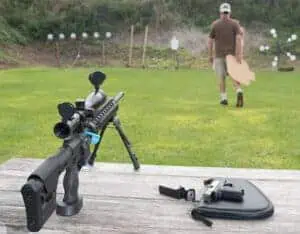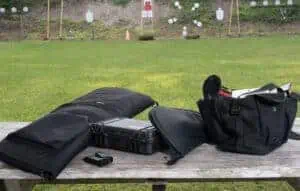How To Bring Your Gun To The Range
We all know the four rules of gun safety, right? There’s no reason to go over them and again and again because all of us always follow all of them all the time, right? Right? Well, based on my experience at the public ranges near me, some of us need some schooling on what is and is not safe behavior at the range. There are also millions of new gun owners out there who are new to gun ownership and gun range etiquette. These people have no idea about simple things that experienced gun owners take for granted. These are just two of the reasons why today, we’re going to talk about how to bring your gun to the range.
How to bring your gun to the range: Safety First
Let’s begin by reviewing the four rules of gun safety.
- All guns are always considered to be loaded
- Always keep the gun pointed in a safe direction
- Keep your finger off the trigger until your sights are on-target
- Always be aware of what is around, to the sides and behind your target
Knowing how to bring your gun to the range in a safe manner means knowing how to follow these rules during the entire journey from your home to the range, at the range itself, and then back to your home. Everything revolves around this idea. Let’s begin in the home. You should own a sturdy case for each gun you take to the range on a regular basis. Whether that’s soft-sided or a hard-sided case doesn’t matter for our purposes. What’s important here is that the case keeps your gun secure and also keeps foreign objects from inadvertently making their way into the trigger.
How To Bring Your Gun To The Range… And Back Home, Too
Your guns should be unloaded from the moment they leave where they are stored to when you (safely) load them in your stall at the range. But what do you do with your concealed carry gun? The answer to that question will vary according to your destination and what your plans are. The ranges where I shoot don’t care if you’re carrying concealed, as long as it stays in the holster while you’re shooting something other than your carry gun. This may not be true of where you shoot. Please check with either a range officer or the ownership if you’re not sure if you can carry concealed while shooting or not.
Speaking of range officers, most indoor ranges and some outdoor ranges will have range officers who are tasked with keeping you and everyone else safe. That’s their job. Let them do it. You may be an experienced shooter who always follows the gun safety rules. However, there may be in-house rules at the range that you don’t know about. If there’s any doubt, either call ahead before you go to the range or ask an employee when you arrive.
The Safety Officers Are There For Your Safety
Knowing how to bring your guns to the range also means knowing how your actions affect everyone else around you. In my experience, many of the problems with basic gun safety happen when people take their guns to the firing line at the range. Rule Number Two states that all guns need to be pointed in a safe direction. If you uncase your gun behind where everyone else is shooting their guns, there is a good chance you’ll sweep the barrel of your gun across any number of people as you place it at your shooting position. Yes, you know your gun is unloaded (or at least you should know that), but does everybody else? Keep your guns pointed downrange and bring your case to the gun, not your gun to the case, and everything should be alright.
If you shoot on an outdoor range, there may be times when you or someone else may need to set up or adjust a target. Make your gun safe before you head downrange. Unload all your guns. Eject any magazines and visually and physically verify that the guns are empty. Then, crucially, leave everything alone until you return. No one in your party should touch anything while you’re downrange, and you shouldn’t touch anything while anyone else is downrange either. Sounds simple, but you’d be amazed at how often I’d heard a range officer order someone to leave their guns alone while someone is hanging up a target on an outdoor range.
Put The Four Rules Into Practice
Rule number two, always keep your gun pointed in a safe direction, applies when you are shooting your gun as well as when you are taking it to the range. I can’t tell you how many times I’ve had someone else’s muzzle sweep over me as I shot next to them at the firing line. Yes, you may “know how to shoot.” Yes, you may know how to bring your gun to the range. But if you don’t know enough to keep your gun pointed in a safe direction at all times, even when things go wrong, you really haven’t learned the rules of gun safety.
If your gun malfunctions, keep it pointed in a safe direction at all times. Keep your gun pointed in a safe direction when you’re talking with your friends. Keep your gun pointed in a safe direction while you’re reloading. After all, the rule says “Always keep your gun pointed in a safe direction,” not “Keep your gun pointed in a safe direction, except when you’re arguing with a friend at the gun range.”
The shooting sports are only as safe as the people at the range. Guns don’t go off by themselves, and they don’t get pointed in unsafe directions by themselves either. Staying safe when you’re at the range begins long before you reach the range itself. Rather, safety begins when you choose to be a safe gun owner and live the rules of gun safety every time you’re around a gun.





